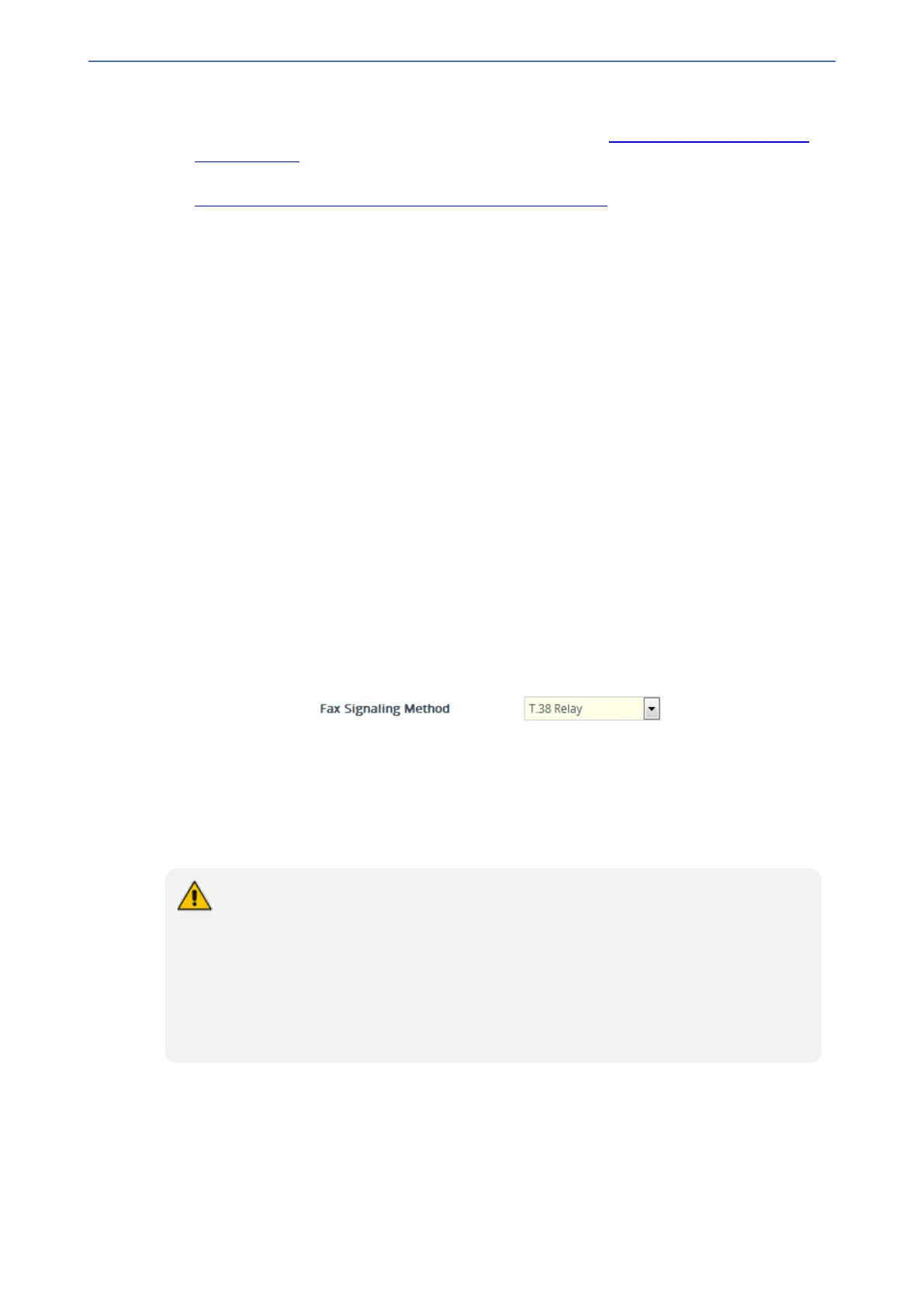CHAPTER15 Media
Mediant 1000 Gateway & E-SBC | User's Manual
T.38 can be configured in the following ways:
■ Switching to T.38 mode using SIP Re-INVITE messages (see Switching to T.38 Mode using
SIP Re-INVITE)
■ Automatically switching to T.38 mode without using SIP Re-INVITE messages (see
Automatically Switching to T.38 Mode without SIP Re-INVITE)
When fax transmission ends, the reverse switching from fax relay to voice is automatically
performed at both the local and remote endpoints.
You can change the fax rate declared in the SDP, using the 'Fax Relay Max Rate' parameter
(FaxRelayMaxRate). The parameter does not affect the actual transmission rate. You can also
enable or disable Error Correction Mode (ECM) fax mode using the 'Fax Relay ECM Enable'
parameter (FaxRelayECMEnable).
When using T.38 mode, you can define a redundancy feature to improve fax transmission over
congested IP networks. This feature is activated using the 'Fax Relay Redundancy Depth'
parameter (FaxRelayRedundancyDepth) and the 'Fax Relay Enhanced Redundancy Depth'
parameter (FaxRelayEnhancedRedundancyDepth). Although this is a proprietary redundancy
scheme, it should not create problems when working with other T.38 decoders.
Switching to T.38 Mode using SIP Re-INVITE
In the Switching to T.38 Mode using SIP Re-INVITE mode, upon detection of a fax signal the
terminating device negotiates T.38 capabilities using a Re-INVITE message. If the far-end device
doesn't support T.38, the fax fails. In this mode, the 'Fax Transport Mode' parameter
(FaxTransportMode) is ignored.
➢ To configure T.38 mode using SIP Re-INVITE messages:
1. Open the Gateway General Settings page (Setup menu > Signaling & Media tab > Gateway
folder > Gateway General Settings), and then from the 'Fax Signaling Method' drop-down list
(IsFaxUsed), select T.38 Relay:
2. On the Fax/Modem/CID Settings page, configure the following optional parameters:
● 'Fax Relay Redundancy Depth' (FaxRelayRedundancyDepth)
● 'Fax Relay Enhanced Redundancy Depth' (FaxRelayEnhancedRedundancyDepth)
● 'Fax Relay ECM Enable' (FaxRelayECMEnable)
● 'Fax Relay Max Rate' (FaxRelayMaxRate)
The terminating gateway sends T.38 packets immediately after the T.38 capabilities are
negotiated in SIP. However, the originating device by default, sends T.38 (assuming
the T.38 capabilities are negotiated in SIP) only after it receives T.38 packets from the
remote device. This default behavior cannot be used when the originating device is
located behind a firewall that blocks incoming T.38 packets on ports that have not yet
received T.38 packets from the internal network. To resolve this problem, the device
should be configured to send CNG packets in T.38 upon CNG signal detection
(CNGDetectorMode = 1).
Automatically Switching to T.38 Mode without SIP Re-INVITE
In the Automatically Switching to T.38 Mode without SIP Re-INVITE mode, when a fax signal is
detected, the channel automatically switches from the current voice coder to answer tone mode
and then to T.38-compliant fax relay mode.
- 157 -

